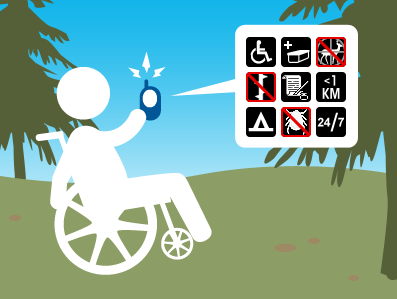La Place du Gal EarthCache
-
Difficulty:
-

-
Terrain:
-

Size:  (other)
(other)
Please note Use of geocaching.com services is subject to the terms and conditions
in our disclaimer.


Le Gal est un grès ovoïde de 132 kg enchaîné sur la place du village de Gauchin-Légal.
De nombreuses histoires et légendes y sont attachées mais cette earthcache vous propose de l’aborder, tout comme l'ensemble de la place, sous un angle géologique.

Le Gal
Les constructions de la place de Gauchin-Légal utilisent essentiellement quatre types de matériaux de construction traditionnels :
Le grès est une roche sédimentaire d'origine détritique formée par cimentation de grains de sable. Elle peut prendre des teintes variables en fonction de sa composition chimique : gris, orangé, brun.
La brique est constituée d'argile issue de l'alteration mécanique et chimique des silicates. Une fois extraite, elle est façonnée en forme de parallélépipède et cuite.
La pierre bleue est une roche sédimentaire de teintes variables (gris, gris-bleu à bleu-noir) constituée d'organismes marins et de particules d'argile cimentés par une boue calcaire. Elle provient principalement de carrières situées dans le Hainaut.
La craie est une roche sédimentaire calcaire souvent blanche formée par l'accumulation de squelettes de microorganismes marins (les coccolithes).

De gauche à droite : grès, brique, pierre bleue et craie
Les coordonnées sont celles du parking. Comme pour toutes les earthcaches, l’objectif n’est pas de découvrir une boîte.
Pour valider votre visite, il vous suffit de vous rendre aux différents points de référence indiqués. Vos observations ainsi que le descriptif ci-dessus vous permettront de valider cette earthcache en répondant aux questions suivantes :
1 - Quelle roche constitue le Gal ? Quelles parties de l'église ont également été construites avec cette roche ?
2 - Comment sont fabriquées les briques ?
3 - Quel monument a été construit en pierre bleue ?
4 - Rendez-vous au waypoint E3. Quel élément présent dans la craie prouve que cette roche est d'origine marine (photo ci-dessous) ?

Loguez cette earthcache "Found it" en l'accompagnant d'une photo du Gal et envoyez-moi vos propositions de réponses soit via mon profil, soit via le Message Center. Je vous contacterai en cas de problème.

Cache accessible aux personnes à mobilité réduite.
Participez au projet "géocaching pour tous" en insérant ce logo "Handicaching" sur toutes vos caches T1 !


Le Gal is a 132 kg ovoid sandstone chained to the village square of Gauchin-Légal.
Many stories and legends are attached to it, but this earthcache invites you to approach it, like the whole place, from a geological angle.

The Gal
The constructions of the Place de Gauchin-Légal essentially use four types of traditional building materials:
Sandstone is a sedimentary rock of detrital origin formed by the cementation of grains of sand. It can take on variable colors depending on its chemical composition: grey, orange, brown.
Brick is made of clay resulting from the mechanical and chemical alteration of silicates. Once extracted, it is shaped into a parallelepiped shape and cooked.
Bluestone is a sedimentary rock of varying hues (gray, gray-blue to blue-black) made up of marine organisms and clay particles cemented together by a mud limestone. It comes mainly from quarries located in Hainaut.
Chalk is an often white calcareous sedimentary rock formed by the accumulation of skeletons of marine microorganisms (coccoliths).

Left to right: sandstone, brick, bluestone and chalk
The coordinates are those of the car park. As with all earthcaches, the objective is not to discover a box.
To validate your visit, simply go to the various reference points indicated. Your observations as well as the description above will allow you to validate this earthcache by answering the following questions:
1 - What rock is Gal? Which parts of the church were also built with this rock?
2 - How are the bricks made?
3 - Which monument was built in blue stone?
4 - Go to waypoint E3. What element present in the chalk proves that this rock is of marine origin (photo below)?

Log this earthcache "Found it" accompanying it with a photo of the Gal and send me your proposed answers either via my profile or via the Message Center . I will contact you if there is a problem.

Cache accessible to people with reduced mobility.
Participate in the project "geocaching for all" by inserting the logo "Handicaching" on all your caches T1!
Additional Hints
(No hints available.)